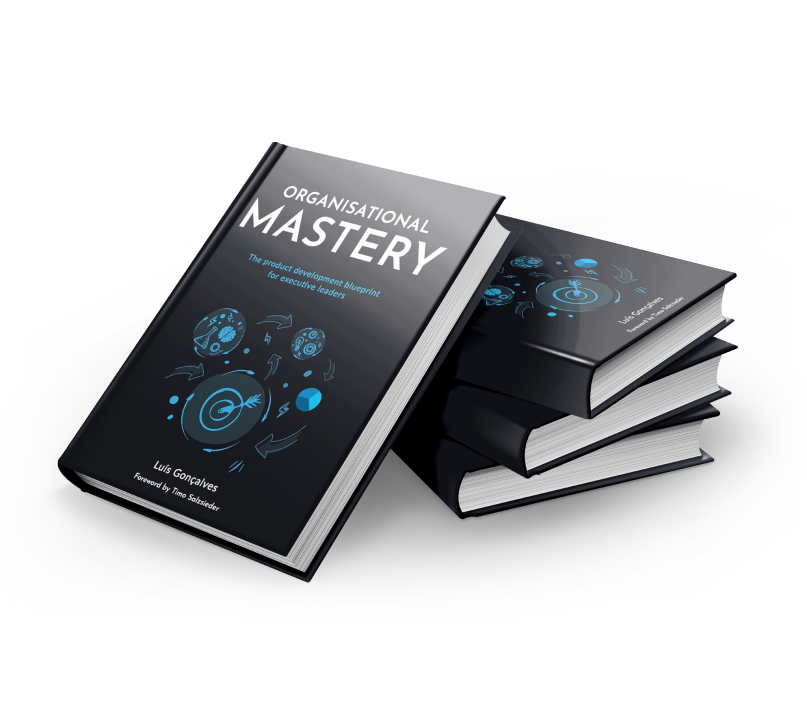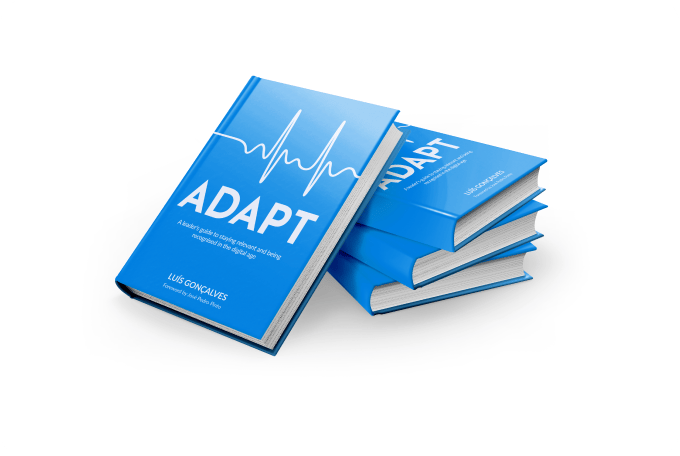Share this
Project to product transformation summary for leaders
by Luis Gonçalves on Jan 13, 2024 5:23:52 AM
The project to product transformation approach is a significant shift for any organization. It entails switching from providing one-time solutions to providing scalable, sustainable products that can produce ongoing revenue. This shift, however, can be difficult and calls for meticulous preparation and execution.
ADAPT Methodology® is a unique Digital Product Development framework to change traditional project-centric companies toward product-led companies!
Society changed and leaders need support in the way how they lead and design their digital product organizations, that is the reason why the ADAPT Methodology® was created, but now let’s get a deep dive into the project to product transformation topic.
The software development sector has witnessed a transition recently toward a more agile and effective method of product creation. The project to product transformation, which is the result of this change, is altering how businesses create and deliver software products.
The project to product movement seeks to improve teams' working conditions in addition to bettering the goods themselves. The project to product method allows teams to experiment, learn, and develop by placing a strong emphasis on continuous improvement. As a result, an organization becomes more innovative and productive, with people who are more engaged and driven.
Software development used to be addressed as a series of projects, each with its own distinct objectives and due dates. A lack of transparency throughout the development process, information silos, and missed opportunities for cooperation were frequent outcomes of the project-based approach, that is what the project to product movement seeks to alter.
Project to product transformation
The project to product method aids businesses in producing better goods more quickly by emphasizing the creation of a continuous flow of value from idea to market. It's a comprehensive strategy that includes every stage of product development, from concept through launch and beyond.
One of the most important aspects of the project to product transformation is adopting an agile development process and a user-centric design approach. Agile development allows for continuous iteration, testing, and feedback, which is crucial for creating a product that meets the needs of customers. The user-centric approach allows for understanding the customer needs, and pain points and developing features that address those needs.
Agile approaches like Scrum and Kanban have gained popularity in part due to the project to product transformation. These approaches, which emphasize adaptability, teamwork, and quick iteration, have successfully assisted businesses in creating better products.
The employment of cross-functional teams is a crucial component of the project to product transformation. Cross-functional teams bring together professionals from different parts of the company to work together on a product instead of having teams specialized in particular activities. Better communication, quicker decision-making, and a more efficient development process are the outcomes of this.
The usage of continuous delivery and deployment is a crucial component of the project to product transformation. With this method, the software is regularly and incrementally distributed, enabling quicker feedback and the capacity to react to shifting market conditions.
One of the key considerations in a project to product transformation is identifying the market potential for the product. This includes conducting thorough market research to understand the needs and preferences of target customers, as well as identifying potential competitors and their offerings.
If the research indicates that there is a viable market, the next step is to develop a minimum viable product (MVP) that can be tested with early adopters. The feedback from these initial users is crucial in refining the product before it is released to the wider market.
The Transform pillar exists to help you restructure your organization to create an organization that is optimized for speed and product-centric. You will be able to change direction quickly, break the necessary hierarchies, and create coalitions between executives and the operational layer.
Another important aspect of the project to product transformation is building a dedicated product team. This may involve hiring additional staff with relevant skills and expertise or outsourcing certain tasks to third-party partners.
The product team should be responsible for ongoing product development, customer support, and maintaining the product's technical infrastructure. The team should also be responsible for creating a product roadmap, prioritizing features, and ensuring that the product is aligned with company goals and user needs.
Another important aspect of the transformation is to focus on metrics that matter for product success. This includes metrics such as customer acquisition and retention rates, product usage, and customer satisfaction. These metrics provide insights into how customers are engaging with the product and what changes can be made to improve it.
It's important to keep in mind that a project to product transformation requires a long-term commitment, as it involves investing time, money, and resources into the development, launch, and ongoing support of a new offering. But the payoff can be significant, as it leads to increased revenue, new customers, and long-term growth.
In summary, a successful project to product transformation requires identifying a viable market, building a dedicated product team, adopting an agile development process, a user-centric design approach, and focusing on metrics that matter for product success.
It also requires a long-term commitment, but the payoff can be significant, as it leads to increased revenue, new customers, and long-term growth. By taking these steps, companies can set themselves up for long-term success and reap significant rewards.
Did you like this article?
We enable leaders to become highly valued and recognized to make an impact on the World by helping them to design Digital Product Companies that will thrive and nourish in the Digital Age, we do this by applying our own ADAPT Methodology®.
If you are interested in knowing if you have what it takes to design and build a great digital product company simply take our Digital Leadership Influence Scorecard.
If you want to know how we can help you to start your transformation please check out our: Training.
If you are interested in doing a transformation in your company please check out our: Consulting.
Share this
- Agile Methodologies (18)
- Product Strategy (18)
- OKRs (16)
- Scrum (16)
- Product Mindset (14)
- Project To Product (10)
- Agile Retrospectives (9)
- CoPs (9)
- Knowledge Sharing (9)
- Time To Market (8)
- Product Discovery (7)
- Continuous Improvement (5)
- Strategy (5)
- Scrum Master (4)
- Content Marketing Strategy (3)
- Product Owner (3)
- Technical Excellency (3)
- Digital Transformation (2)
- Innovation (2)
- Scaling (2)
- Team Building (2)
- Business Model (1)
- Cost Of Delay (1)
- Customer Feedback (1)
- Customer Journey (1)
- Customer Personas (1)
- Design Thinking (1)
- Digital Leadership (1)
- Digital Product Tools (1)
- Go To Market Strategy (1)
- Google Design Sprint (1)
- Lean Budgeting (1)
- Lean Change Management (1)
- Market Solution Fit (1)
- Organisational Impediments (1)
- Outsourcing (1)
- Product (1)
- Product Metrics (1)
- Product Roadmaps (1)

Organisational Mastery
Get your free copy

ADAPT
Get your free copy

Product First
Get your free copy


